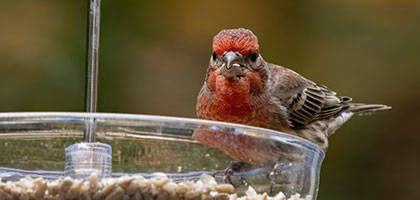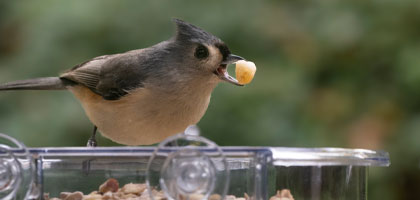Feeding orioles can be a rewarding experience. These vibrant birds bring life and color to our gardens. But how do you attract them? And what should you feed them?
This guide will provide essential tips for feeding orioles effectively. It's designed for bird enthusiasts, gardeners, and anyone interested in creating a welcoming environment for these beautiful creatures. We'll cover everything from understanding the oriole diet to creating a bird-friendly habitat. You'll learn how to prepare homemade nectar, choose the right feeders, and protect orioles from predators.
So, whether you're a seasoned birdwatcher or a beginner, this guide will help you feed orioles in a way that's beneficial for them and enjoyable for you. Let's dive in.
Understanding Orioles and Their Diet
Orioles are known for their vivid colors and sweet tooth. This characteristic defines their feeding habits and dietary needs. Their diet mostly consists of fruits, nectar, and insects. This variety ensures they get the necessary nutrients for survival.
To effectively attract and nourish orioles, it's crucial to offer a menu they find irresistible. The more diverse the food selection, the more likely you are to attract them.
What Orioles Eat:
- Nectar from flowers or feeders
- Dark-colored fruits like berries and cherries
- Insects for protein
- Occasional treats like grape jelly
Understanding their migratory patterns is also important. Orioles travel long distances and need high-energy foods upon arrival. Creating an environment that mimics their natural habitat can enhance your chances. Plant native flowering trees to provide natural nectar sources. Incorporate insect-rich areas to supplement their protein intake naturally.
Preparing Homemade Nectar for Orioles
Creating homemade nectar for orioles is simple and rewarding. It requires only two ingredients: sugar and water. To make it, mix one part sugar with four parts water. Stir until the sugar dissolves completely.
Avoid adding dyes or artificial sweeteners to the nectar. These additives are harmful to orioles and should be avoided. Remember to cool the nectar before pouring it into feeders. Freshness is key, so replace the nectar every few days. Regular cleaning of feeders prevents mold and bacteria growth, ensuring a healthy feeding environment.
The Best Foods to Offer Orioles
Orioles are attracted to a variety of foods that cater to their natural diet. Offering a diverse menu ensures they return to your garden.
Fruits are a favorite among orioles. They particularly enjoy oranges, grapes, and berries. Slice fruits and place them on feeder spikes or in shallow dishes.
Jelly is another treat they find irresistible. Use grape jelly without high fructose corn syrup or artificial sweeteners. Offer it in moderation for a healthy snack.
Protein-rich options like mealworms are perfect during breeding seasons. They provide the necessary nutrients for young orioles. Incorporate them into your feeding routine.
Here's a quick list of preferred foods:
- Oranges and other ripe fruits
- Grape jelly (without artificial ingredients)
- Homemade nectar
- Mealworms for protein
Present these foods separately to prevent mixing. It allows orioles to choose their preferred meals at leisure. This variety not only attracts orioles but keeps them healthy.
Choosing the Right Feeders for Orioles
Selecting the ideal feeder is crucial for oriole feeding success. Orioles prefer feeders designed specifically for their needs.
Oriole feeders often feature larger perches and feeding ports. These allow orioles to feed comfortably, accommodating their size and beaks. Bright orange feeders are particularly effective. Orioles are naturally drawn to the color orange, making these feeders easier for them to locate.
Some feeders come with built-in ant moats. These prevent insects from accessing the nectar, ensuring it stays fresh and appealing. Investing in sturdy, well-designed feeders can greatly enhance your oriole feeding experience. This ensures your efforts yield delightful and frequent visits from these vibrant birds.
Placement and Maintenance of Oriole Feeders
Proper feeder placement is key to attracting orioles. Position feeders in quiet, sheltered spots to make them feel secure. Hang feeders at varying heights to cater to different oriole preferences. This minimizes competition and encourages more birds to visit.
Regular cleaning of feeders is essential. Dirty feeders can harbor mold and bacteria that harm birds. Check feeders routinely for wear and damage. Well-maintained feeders ensure a safe, consistent food source for orioles.
Creating a Bird-Friendly Habitat
Creating a welcoming habitat is crucial for attracting orioles. Start by planting native flowering shrubs and trees. These provide natural food sources and shelter. Consider adding a water feature, such as a birdbath. Orioles need fresh water for drinking and bathing, which can enhance your garden's appeal.
Avoid pesticides, as orioles consume insects and could be harmed by chemicals. Opt for natural pest control methods instead. Offer nesting materials like natural fibers and string. By encouraging orioles to nest nearby, you create a sustainable, nurturing environment for these vibrant birds.
Seasonal Adjustments for Feeding Orioles
Orioles are migratory, so understanding their seasonal habits is vital. In early spring, place feeders to welcome returning orioles. Fresh food will draw their attention as they seek sustenance after migration.
During summer, adapt feeding practices to support breeding orioles. Offer protein-rich foods, like mealworms, to help them nourish their young. This ensures a consistent food supply throughout the season.
In autumn, reduce feeding to encourage migration. As orioles prepare to leave, shift your focus to maintaining feeders for next spring. This cyclical approach keeps orioles returning year after year.
Adjusting to the seasonal needs of orioles enhances your ability to feed them effectively. Remain observant, ensuring your efforts align with their natural behaviors and migratory patterns.
Protecting Orioles from Predators and Hazards
Ensuring orioles' safety means protecting them from common predators. Cats pose a significant threat, so keep them indoors. This small action makes your yard a safer haven for birds.
Prevent window collisions, a common hazard for orioles. Place feeders a safe distance from glass surfaces. Use decals or reflective tape to improve window visibility for birds. Insects like ants can invade nectar feeders. Install ant moats or guards to keep unwanted visitors away. This simple measure preserves the food for orioles.
Engaging with the Birdwatching Community
Joining the birdwatching community can enhance your oriole-feeding experience. Connect with enthusiasts both locally and online to share insights and tips. Engaging with others enriches your understanding of these beautiful birds.
Participating in birdwatching clubs and forums opens opportunities for learning. You can exchange advice and stories with like-minded individuals. This engagement fosters a deeper appreciation for orioles and their natural habitats.
Conclusion: The Joy of Feeding Orioles
Feeding orioles is a rewarding experience that connects you with nature. Watching these vibrant birds visit your feeders brings joy and satisfaction. Each visit helps you appreciate their beauty and role in the ecosystem.
By offering a hospitable environment, you contribute to their well-being. Enjoy the process, knowing your efforts support these remarkable creatures. Embrace the joy and wonder they bring to your surroundings.




